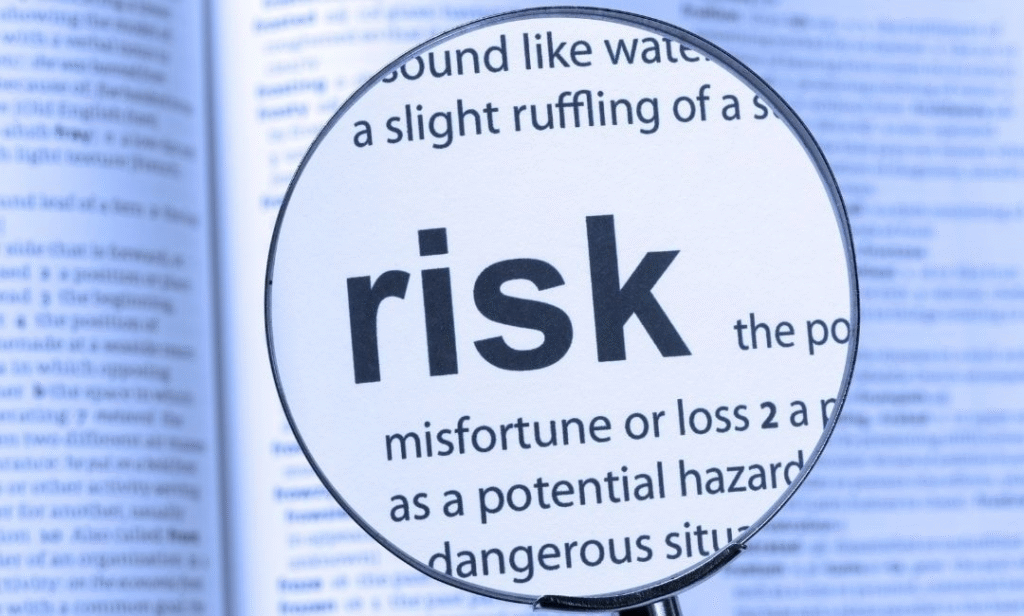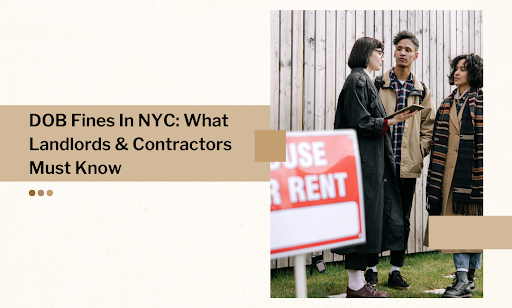One small oversight. That’s all it takes for NYC’s Department of Buildings (DOB) to issue fines that snowball fast—costing thousands, halting projects, and triggering legal headaches.
Most landlords and contractors assume penalties hit only when work goes horribly wrong. The truth? Minor slip-ups—like missing paperwork or late inspections—can carry the same weight as major safety violations.
This article lays out exactly what you need to know about DOB fines in NYC for 2025. We’ll break down penalties, deadlines, and proactive steps to stay compliant—and show you how to keep projects moving without surprises.
Here’s what we’ll cover:
- Key DOB changes in 2025 affecting penalties and inspections
- Most common violations and the risks they bring
- High-cost mistakes you can’t afford to repeat
- Smart tools for tracking violations and deadlines automatically
- Action steps to protect projects, budgets, and timelines
Stay with us. The next few minutes could save you from months of fines, hearings, and paperwork nightmares.
Key DOB Changes Affecting Penalties and Inspections
New updates from the NYC Department of Buildings (DOB) are reshaping how inspections and penalties work. These changes affect property maintenance timelines, compliance responsibilities, and violation handling procedures.
No-Penalty Inspection Program
Starting May 19, 2025, small landlords can request DOB inspections without facing penalties for specific non-hazardous issues. This change gives owners a window to fix problems before enforcement begins. The inspection window closes on June 30, so timely scheduling is critical.
Key Points:
- Applies to small residential properties under specific conditions
- Covers non-immediate safety hazards such as minor maintenance or structural concerns
- Requires property owners to submit corrective action plans after inspections
This change encourages early compliance rather than waiting for violations to trigger costly enforcement actions.
Local Law 97 Compliance
Local Law 97, focusing on building emissions, enters its next enforcement phase in 2025. Buildings over 25,000 square feet face penalties of $268 per metric ton of carbon emissions above the legal limit.
Practical Implications:
- Property owners must submit annual emissions reports
- Energy efficiency upgrades become a compliance necessity, not a choice
- Financial penalties escalate for repeat non-compliance cases
These requirements make energy management a direct financial priority for building owners in 2025.
Expanded Safety Oversight
DOB inspections in 2025 now prioritize building safety systems such as fire exits, sprinklers, and structural integrity. This shift follows several high-profile building accidents in 2023–24, leading to a citywide push for stricter enforcement standards.
New Focus Areas:
- Façade inspections for aging structures
- Emergency exit accessibility
- Safety equipment functionality checks
The heightened focus on structural safety signals a stronger enforcement stance by the DOB this year.
Most Common Violations and the Risks They Bring For Building Owners

Building violations in NYC often fall into patterns that repeat year after year. These are not rare events; city records confirm that over 651,482 DOB violations were issued in 2024 alone, with unpermitted work and safety system failures leading the list. The financial and legal risks escalate quickly once a violation is issued, making early awareness critical for property owners and contractors.
Below are five violation types that consistently generate high penalties and operational risk in NYC. These aren’t vague issues. They have clear legal, financial, and safety consequences.
Unpermitted Construction Work
Any construction, alteration, or demolition performed without the proper DOB permit triggers substantial legal exposure. The law defines precise formulas for calculating civil penalties under NYC Administrative Code § 28-213.1 and related rules.
| Type of Property | Penalty Formula | Minimum / Maximum Penalty |
| One- or two-family dwelling | 6× the fee for the required permit | Minimum $600, maximum $10,000 |
| Buildings other than one- or two-family dwellings | 21× the fee for the required permit | Minimum $6,000, maximum $15,000 |
Additional risks:
- Stop work orders until violations are resolved.
- Requirement to restore premises to the prior legal condition; failure can lead to demolition.
- Delay in receiving future permits until all outstanding unpermitted work is legalized.
In dozens of recent DOB enforcement actions, buildings with unpermitted renovations in common areas (e.g., condominium lobbies) have been assessed the higher penalty tier. These penalties delayed project completion by weeks and doubled mitigation costs because a legal and compliance review was required.
Illegal Conversions of Space
Converting spaces without proper DOB review or zoning compliance—such as converting basements into dwellings, creating unauthorized Single Room Occupancy (SRO) units, or changing occupancy classification—triggers multiple layers of risk.
Key points:
- Zoning rules and Certificate of Occupancy (C of O) classifications must align with use. Deviating can invalidate insurance and subject owners to ECB hearings.
- Fire code, egress (exit paths), ceiling height, and ventilation rules citywide apply—and violations here often lead to Class 1 immediately hazardous notices.
Penalties & consequences:
- Owners may be required to undo conversion work, re-install proper egress, or make structural modifications.
- Insurance risk increases; in many cases, insurers deny claims arising from unauthorized occupancy.
- Loss of rent if tenants are ordered to vacate.
Missing or Non-Functional Safety Equipment
Smoke detectors, carbon monoxide alarms, sprinkler systems, and other safety infrastructure are not optional. Code mandates that they function correctly. Failure affects both occupant safety and legal liability.
- NYC Fire Code, as well as the Buildings Code, mandates working equipment. Lack of properly installed and maintained smoke detectors in multiple units qualifies as a high-hazard violation.
- In recent years, thousands of violations related to missing or non-functional detectors and alarms were issued in NYC. Many were part of complaint-driven inspections.
Risks include:
- Possible vacate orders for residential buildings deemed unsafe.
- Increased liability exposure for owners in case of injury or fire.
- Higher costs of remedial work and possible engineering reports.
Façade Safety & Inspection Failures under FISP
The Façade Inspection & Safety Program (formerly Local Law 11, now under updated FISP cycles) demands regular inspections and corrective action when façades are unsafe. Missed filings, late reports, or uncorrected unsafe conditions carry specific penalties.
Rules and penalties:
| Violation | Penalty |
| Late filing of the initial facade report | $1,000 per month until submitted |
| Failure to file the initial report at all | $5,000 per year |
| Failure to correct unsafe conditions after being flagged | $1,000/month plus additional shed penalties for required scaffolding, which escalate depending on size and duration |
| Failure to correct SWARMP (“Safe with a Repair and Maintenance Plan”) status conditions | $2,000 flat penalty for certain cycles when conditions worsen or remain uncorrected |
Additional notes:
- Sidewalk sheds erected due to unsafe façades sometimes remain up for years.
- Unsafe façades impose pedestrian risk, potential injuries, and public liability exposure.
Certificate of Occupancy Violations
When a building is used in a way that differs from its official Certificate of Occupancy (C of O) or after alterations without obtaining a new C of O, the owner faces compliance and enforcement consequences.
Technical legal points:
- NYC Administrative Code § 28-118 requires owners to obtain a new C of O when there’s a change in use, change in occupancy classification, or structural alteration that affects ingress, exits, or safety.
- Occupying or renting space in violation of the building’s C of O is grounds for Class 1 violations (immediately hazardous) in many cases.
Risks & penalties:
- Work stoppage orders, forced tenant evictions, loss of rental income.
- Legal exposure if occupants are harmed, lack of inspections, or insurance coverage.
- Difficulty obtaining future permits until all C of O issues are resolved.
Compliance Framework That Prevents Fines and Loss
A clear compliance process limits risk exposure, protects budgets, and prevents unnecessary penalties. The framework below organizes the steps for effective execution.
Pre-Project Compliance Audit
Before starting any work, review every technical and legal requirement thoroughly.
- Zoning & Use Verification: Confirm zoning designations and the building’s Certificate of Occupancy match the intended use.
- Permit Requirements Review: Identify all permits, licenses, and professional sign-offs required before scheduling work.
- Plan Submission Checks: Ensure drawings include fire safety layouts, egress paths, structural load calculations, and energy code compliance details.
This stage prevents unpermitted work and early enforcement actions.
Risk Monitoring & Inspection Scheduling
Once construction begins, systematic monitoring keeps projects aligned with regulatory standards.
- Scheduled Inspections: Perform internal compliance checks before official DOB inspections.
- Compliance Checkpoints: Assign responsibilities for each milestone, such as structural framing, façade work, and fire safety installations.
- Deadline Tracking: Maintain calendars for filings, inspections, and required corrections to prevent missed dates.
A disciplined schedule ensures issues are identified and corrected early.
Documentation & Reporting Protocols
Comprehensive records create proof of compliance during audits or hearings.
- Maintain organized permit files, approval letters, and revision logs.
- Keep photographic evidence of all corrective actions taken.
- Store Certificates of Correction and inspection sign-offs in a single system for easy retrieval.
Documentation provides a defensible position if violations occur.
Involvement of External Specialists
Certain compliance areas demand technical expertise beyond general contracting knowledge.
- Engage registered architects, professional engineers, or code consultants for structural or façade work.
- Use certified inspectors for fire alarms, sprinkler systems, and energy efficiency installations.
- Consult legal professionals for zoning variances, occupancy changes, or hearing representation.
Specialists ensure technical accuracy in filings and construction work.
Continuous Review & Corrective Feedback Loop
Compliance requires ongoing oversight, not a one-time review.
- Perform quarterly internal compliance audits for active properties.
- Update protocols when building codes or enforcement priorities change.
- Assign accountability for every corrective action item with defined completion timelines.
Regular feedback creates a sustainable compliance culture across all projects.
Smart Tools for Tracking Violations and Deadlines Automatically

Managing DOB violations through paperwork, emails, and inexperienced external specialists leaves NYC property owners exposed to missed repair deadlines, potential issues, and heavy fines that damage property value and lead to legal disputes. Manual processes simply cannot keep pace with the volume of notices, cure dates, and agency updates hitting owners of rental property and buildings based across multiple boroughs.
This is where AI-powered compliance tools like ViolationWatch transform proactive management into a system that keeps owners approved for permits, on track with safety standards, and ahead of mandatory filings—protecting public safety while preserving project budgets.
Why Traditional Methods Fail
- Manual tracking gaps: Spreadsheets and emails rarely catch every violation number or ensure necessary repairs are finished on time.
- Inexperienced external specialists: Hiring consultants without DOB procedural knowledge often causes missed sub cycles in façade inspection filings or delayed violation removal steps.
- Escalating penalties: A single fire escape violation or missing proper permits can turn a small issue into hefty fines if DOB inspectors find unresolved conditions.
The smarter approach involves automation, centralized data, and real-time analytics—none of which traditional methods offer.
How ViolationWatch AI Works with DOB Systems
ViolationWatch integrates directly with DOB databases to stay informed on every resolution process and progress update. Its AI-driven algorithm processes violation data for properties over six stories as well as smaller residential sites, ensuring licensed professionals have instant access to required compliance details.
| Function | How the AI Handles It Automatically | Risk Reduction Impact |
| Violation Detection | Scans DOB records for new cases, including missing permits | Immediate alerts prevent overlooked violations |
| Deadline Classification | Reads cure dates, hearing schedules, and correction steps | Ensures contact with agencies before deadlines lapse |
| Severity Prioritization | Flags Class 1 and hazardous cases | Focuses on the highest-risk violation resolution needs |
| Automated Alerts | Sends email, SMS, and dashboard notifications instantly | No missed important updates for the property manager |
| Document Storage & Tracking | Organizes inspection reports, affidavits, and permits | Proof available during audits, inspections, and hearings |
This automation eliminates the guesswork, accelerates violation removal, and keeps every project aligned with approved compliance procedures.
Advantages Over Manual or Low-Skilled Support
- Real-time processing: Handles façade inspections, mandatory filings, and resolution process tracking in seconds.
- Portfolio scalability: One platform manages hundreds of properties without extra staffing or delays.
- Cost predictability: Prevents surprise consulting fees and unpredictable violation penalties for every property manager involved.
The shift from manual tracking to automated compliance workflows gives owners complete control, reduces heavy fines, and keeps every site ready for DOB inspectors—long before the next enforcement cycle begins.
Action Steps for Property Owners to Resolve Violations Quickly
Knowing how to act once a violation comes through saves money, time, and legal risk. Follow this precise workflow to handle DOB notices properly and reduce the risk of future violations across multiple properties in New York City.
1. Review the Violation Notice Carefully
Start by reading every detail on the notice:
- Violation type (DOB, ECB, Electrical, Façade, etc.), class (hazardous or non-hazardous), and specific code reference.
- Cure date or hearing date, and whether immediate correction is required.
- Required documentation: photos, permits, signed affidavits, or engineering/architectural certifications.
This initial review sets the foundation for every next step and helps you address the violation correctly from the start.
2. Explore Certificate of Correction or Dispute Options
If the violation is non-hazardous and you can correct it before the hearing:
- File a Certificate of Correction (CoC) form with the DOB. Admitting the issue, showing proof of correction, and submitting required documents might avoid or reduce fines.
- If you believe the violation is incorrect, you may contest it at a hearing with the Office of Administrative Trials and Hearings (OATH) / Environmental Control Board (ECB), depending on the violation type.
Taking action early often prevents penalties from compounding unnecessarily.
3. Correct the Issue Precisely
Once you know what must be done:
- Engage a properly licensed contractor or technical professional (architect/engineer) if the correction involves structural changes, safety systems, or code compliance details.
- Ensure all work follows the code citations listed in the notice. For instance, if the violation concerns facade inspections, work must comply with Local Law 11 / FISP technical reporting requirements.
- If permits are required for the correction, obtain them in advance and ensure they are visibly posted during work.
This step eliminates the root cause of the violation rather than treating only the symptoms.
4. Document Everything
Documentation gives you leverage; missing proof is often what keeps violations open. You should:
- Take dated photographs before, during, and after repairs.
- Keep receipts, permits, inspection reports, and signed affidavits.
- Log correspondence or communications relevant to the violation (e.g., emails requesting access, notices sent).
Well-organized records simplify proof submission and speed up resolution.
5. Submit Proof and Request Re-Inspection
After correcting the condition:
- File a Certificate of Correction or other required forms. Include proof of payment of any civil penalties, supporting documentation, and any notarized statements if required.
- For DOB violations requiring inspections, request a re-inspection from the issuing unit. Don’t assume the work is closed until it shows as resolved in the Buildings Information System (BIS).
Confirming closure prevents unresolved violations from blocking future permits or property transactions.
6. Confirm Resolution and Prevent Recurrence
After the violation is removed:
- Check BIS / Property Profile Overview to confirm status (open vs. resolved). Open violations remain public and may block permits, Letters of Completion, or sales.
- Review internal maintenance to prevent similar issues: periodic inspections, safety equipment checks, permit visibility, façade reporting compliance.
- Monitor changes in DOB / Code / Local Laws to stay ahead of new violation types or stricter requirements.
Taking these steps consistently highlights the importance of a proactive compliance system and helps owners maintain long-term regulatory readiness.
Stay Ahead of DOB Fines in NYC with Confidence
Finishing this guide means you now have the tools to stay in control of DOB compliance rather than react to penalties after they arrive. The next inspection, filing deadline, or violation notice doesn’t have to feel like a crisis anymore.
Follow the steps, use the frameworks, and approach violations with a system instead of scattered checklists. That’s how you prevent fines from draining budgets, projects from stalling, and properties from slipping into enforcement backlogs.
For owners managing multiple buildings or high-risk properties, the real result comes from turning compliance into something predictable. Deadlines are met on time, violations close faster, and unexpected penalties stop appearing in the mail.And this is where tools like ViolationWatch make a difference. They remove the guesswork, monitor every property automatically, and keep NYC owners one step ahead of fines that used to cost time, money, and peace of mind.

